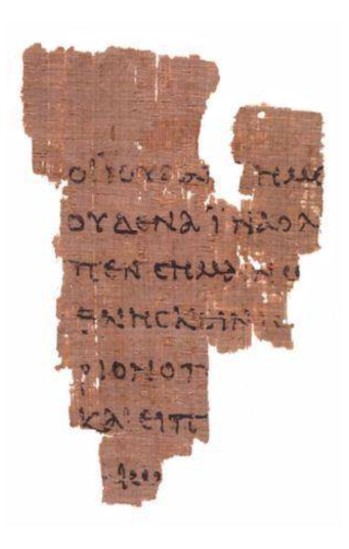Identifying the Oldest New Testament Manuscripts
It is axiomatic that a book cannot be written later than its earliest copy, so identification of the oldest biblical manuscripts is an initial step in dating the books of the Old Testament.
The oldest copy of the entire New Testament is known as Codex Sinaiticus, a Greek manuscript written about 330-350 A.D. Sinaiticus is so named because it was discovered at the Monastery of Saint Catherine at the foot of Mount Sinai. In addition to the New Testament, Sinaiticus contains part of the Septuagint, or Greek Old Testament, and two non-canonical Christian books, the Epistle of Barnabas and Shepherd of Hermes. This manuscript is now kept at the British library in London. A slightly older manuscript is Codex Vaticanus. Vaticanus contains all the books of the New Testament except for 1-2 Timothy, Titus, Philemon and Revelation. This manuscript has been housed in the Vatican library for as long as it has been known. Vaticanus was written by about 300 A.D.
Somewhat older manuscripts exist for small portions of the New Testament, usually in the form of papyrus fragments from Egypt. The oldest undisputed fragment is known as P52, which contains part of John 18:31-33. This fragment is dated without significant dispute to the second century A.D., and usually between 125 and 160 A.D. The fact that the passage comes from John is ironic, since most (not all) scholars believe John was the last of the four gospels to be written. Other old papyri include P66, containing portions of John and dating to about 200 A.D., P46 containing Romans to Hebrews and dating to 250 A.D., P45 containing Mark – Acts and dating to 250 A.D., P4 containing Luke and dating to 250 A.D., P75 containing Luke-John and dating to 250 A.D., and P47 containing Revelation and dating to 250 A.D.

Papyrus Fragment P52, containing part of John 18:31-33 and dated 125-150 A.D.
In 1970, Father Jose O’Callaghan suggested that Dead Sea Scrolls 7Q5 and 7Q4 contained portions of Mark 6:52-53 and 1 Timothy 3:16-4:3, respectively. His argument was picked up and championed by Carsten Peter Thiede, a German New Testament scholar. The community that kept the Dead Sea Scrolls was destroyed in 68 A.D., so no Dead Sea scroll can be older than that. Scrolls 7Q4 and 7Q5 are very tiny fragments, and most Qumran scholars have rejected the theories of O’Callaghan and Thiede.
Dead Sea Scroll 7Q5